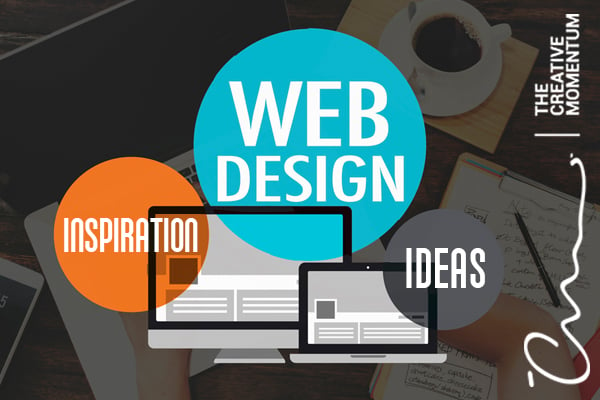A Comprehensive Overview to Ideal Practices in Internet Layout for Boosted Customer Experience
In the world of internet style, understanding user needs is paramount for creating reliable electronic experiences. A well-structured technique that highlights responsive design, intuitive navigating, and a solid visual hierarchy can considerably enhance customer involvement. Furthermore, optimizing page lots rate is essential in meeting and surpassing user expectations. As we discover these finest practices, it comes to be apparent that each element plays a critical duty in the general user experience. The inquiry stays: what certain approaches can be applied to ensure these concepts are perfectly integrated right into your design procedure?
Comprehending Customer Needs
Comprehending customer needs is essential to reliable web design, as it straight affects user experience and engagement. A detailed understanding of target audiences enables developers to develop websites that resonate with individuals, cultivating a feeling of link and complete satisfaction (Web design agency). To accomplish this, developers have to engage in individual research study, making use of approaches such as studies, meetings, and usability testing. This data collection offers insights into individual choices, actions, and discomfort factors.

Importance of Responsive Design
Receptive style is important in today's digital landscape, where users accessibility internet sites throughout a myriad of devices with differing display sizes. As mobile device use remains to increase, ensuring that a site offers an optimal watching experience on mobile phones, tablet computers, and desktop computers is vital. A responsive layout adapts the format and material based on the customer's gadget, enabling smooth navigation and readability.
A responsive site can boost visibility, leading to enhanced website traffic and user involvement. Additionally, a consistent customer experience throughout gadgets constructs brand name trustworthiness and promotes customer commitment.
In addition, applying receptive style can cause lowered growth and upkeep costs. Rather than producing several variations of an internet site for various devices, a single receptive site streamlines updates and content management. This performance not just saves time however additionally makes certain that individuals receive the most present info regardless i thought about this of exactly how they access the website.
Simplifying Navigation

To achieve simplified navigating, internet developers must prioritize a rational pecking order of content. Utilizing detailed tags for food selection products can assist users understand the objective of each area at a glimpse. Furthermore, reducing the number of food selection products minimizes cognitive load, allowing customers to concentrate on the most essential aspects of the website.
Integrating a search function is also valuable, as it gives individuals with a direct course to certain material. Furthermore, making certain that navigating elements correspond throughout the website go to website fosters knowledge and simplicity of use. Responsive style principles need to also be used to navigation food selections, ensuring they operate smoothly throughout all devices. Inevitably, simplified navigating not only boosts user contentment but additionally adds to attaining broader service goals by enhancing conversion prices and decreasing bounce prices.
Enhancing Visual Hierarchy
Just how can developers develop an aesthetic power structure that overviews individuals with material perfectly? The answer lies in the strategic usage of layout aspects that guide attention and facilitate comprehension.
In addition, using whitespace is critical his explanation in developing breathing space around material. This not only protects against frustrating the individual but also stresses crucial aspects, making them stand apart. Typography also plays a substantial function; employing differing font style weights and styles can set apart in between primary and second info efficiently.
In enhancement to these methods, visual signs such as arrows or symbols can assist users via the interface, enhancing the designated flow of details. By thoughtfully incorporating these elements, developers can produce an engaging visual power structure that improves customer experience, making sure that crucial web content is easily obtainable and understood. This mindful orchestration of design aspects ultimately promotes an extra user-friendly communication with the website.
Maximizing Page Tons Rate
In the fast-paced digital landscape, maximizing page tons rate has ended up being a critical consider customer complete satisfaction and retention. Study indicates that individuals anticipate website to load within two secs; any kind of delay beyond this limit can bring about enhanced bounce rates and lowered conversion possibilities.
To enhance tons rate, beginning by minimizing HTTP requests, as each request contributes to the filling time. Make use of techniques such as CSS sprites to integrate several pictures right into one, lowering the number of requests. Additionally, enhancing pictures via compression and the usage of modern formats like WebP can considerably reduce data sizes without jeopardizing high quality.
Carrying out web browser caching also plays an essential function in improving web page speed. By saving often accessed files in your area on an individual's device, succeeding gos to can fill nearly instantaneously. In addition, think about leveraging Content Shipment Networks (CDNs) to distribute material closer to users, lessening latency.
Conclusion
In conclusion, efficient web style focuses on customer needs through precise research study, cultivating instinctive and receptive interfaces. Ultimately, a commitment to these principles is vital for establishing effective electronic experiences that fulfill the advancing assumptions of customers in an affordable on-line landscape.